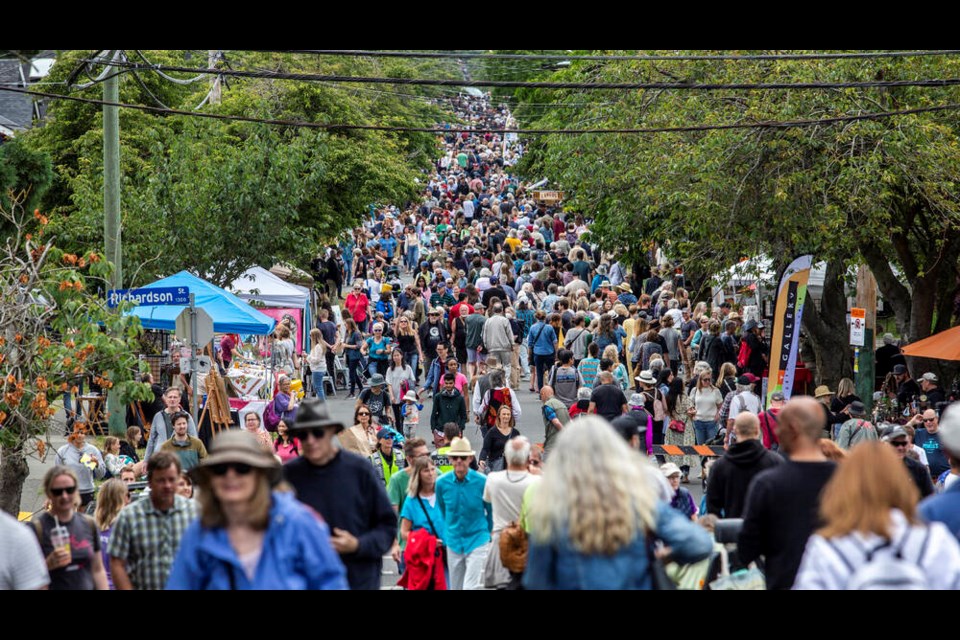To the joy of thousands, Victoria’s largest art festival returned to Moss Street Saturday, with the work of more than 160 regional artists lining Moss from Fort Street to Dallas Road.
The street in Fairfield was host to the 33rd TD Art Gallery Paint-In, a festival with dozens of booths for artists to sell their wares and give demonstrations, inviting attendees into the worlds of oil painting, watercolour, sculpture, performance art and more.
And if inspiration struck, attendees could create their own art at eight Imagination Stations along the route.
At one of those stations was nine-year-old Cora Stober, who was absorbed in drawing purple stars.
“I usually make crafts,” she said. “Like robots.”
A few booths over, Cora’s mother Heather was selling her art — bright, geometric paintings with images of wildlife. Heather said the art festival shows kids — and adults — how many different ways there are to be an artist.
“Art can feel very serious in a gallery, but here, there is so much hands-on stuff. They get to interact with the art, they get to see a whole host of different things. I think it’s really cool for kids to see.”
From felted wild birds and driftwood people to interactive tin-can musicals, Chinese calligraphy and intricately painted hub caps, the Paint-In had something for everyone.
Watercolour painter Joanne Thomson set out a jar of magenta-hued beach peas to draw throughout the day. “You want to be demonstrating and showing what you’re doing,” she said. “That’s the point of this, to show that there are artists in the community, and we’re all here. We don’t have to bring in artists from other places.”
Brandy Lancaster, an Indigenous beader of Lekwungen, Lyackson, Squamish and Kwakwaka’wakw origins, was participating in the Paint-In for the first time.
“This is really exciting, it’s nice to see all the different artists,” she said. “I really believe in supporting local and supporting small.”
Lancaster’s art, primarily jewelry, is contemporary, but she also uses traditional materials like cedar and abalone shells.
“We’re strongly rooted in the coast,” she said. “Beading is being used as a conduit to reconnect with our culture that they tried to strip away from us. It obviously didn’t work because we’re still here.”



